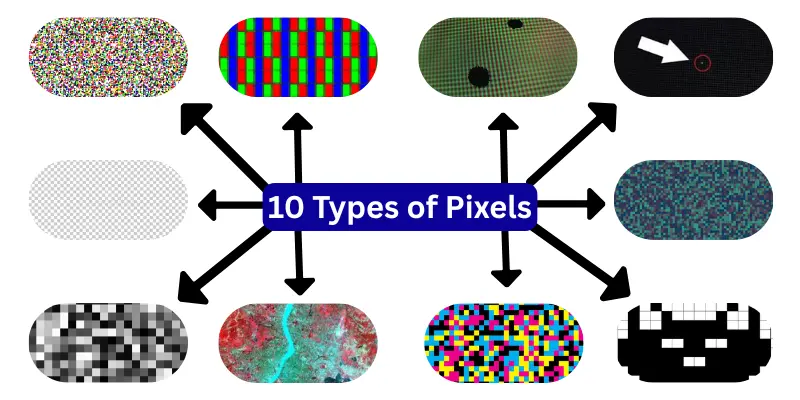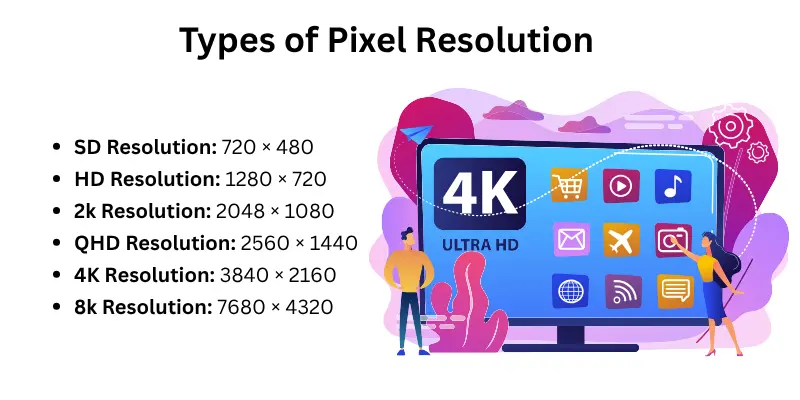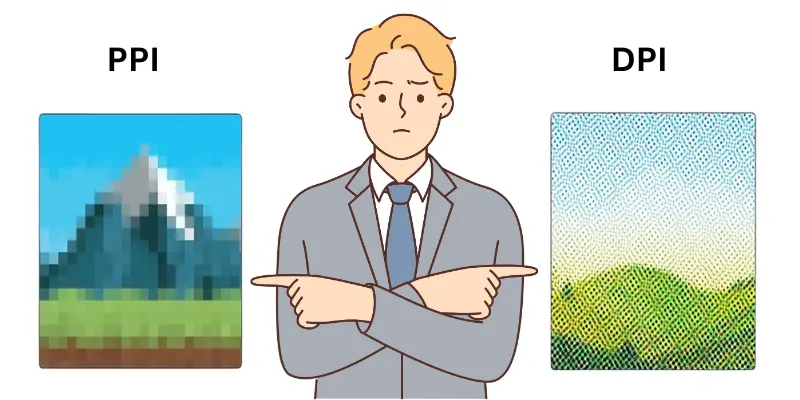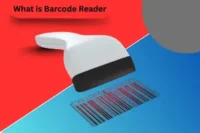What is Pixel in Computer
Published: 26 Jul 2025
Did you know that every picture you see on a computer screen is made up of tiny dots called pixels? These pixels are so small that you usually can not see them unless you zoom in really close. In fact, a single computer screen can hold millions of pixels working together to create clear images, bright colors, and smooth videos. That’s why it’s important to understand what is pixel in computer and how it works.
What is Pixel in Computer
A pixel is the tiniest part of a picture or image that you see on a computer screen. It’s like a tiny colored dot. When lots of these dots come together, they make the full image, video, or text you see on your monitor. These little dots are called pixels, short for “picture elements.”
Think of it like this imagine a big puzzle. Each puzzle piece is small, but when you put them all together, they make one big, clear picture. That’s exactly what pixels do on a screen.
Most people do not even notice pixels because they are so tiny. But if you zoom in on a digital photo or bring your eyes very close to the screen, you’ll start to see little square boxes. Those boxes are pixels working together to show color, shape, and detail.
Each pixel can only show one color at a time, but screens use millions of pixels to mix colors and make everything look smooth and real.
- Real-life example: When kids play games like Minecraft, they can see pixels clearly because the game uses square blocks for its art style. It’s a fun way to understand how pictures are made of many small parts.
Understanding What is Pixel in Computer helps readers learn how screens work, how image quality is measured, and why some screens look better than others.
History of Pixel
The story of the pixel begins many years ago before colorful screens and HD videos. Back then, computer screens could only show simple text. No images. No games. Just plain letters and numbers. People started to wonder, “How can we make computers show pictures too?”
That’s when the idea of the pixel came in. The word pixel means “picture element.” It’s a small square dot that helps build a full image on the screen. Just like how tiny building blocks create a big toy castle, pixels create everything you see on a screen.
The very first use of pixels started around the 1960s. Computers were still new, and scientists wanted to show pictures using small dots. These early screens had very few pixels—sometimes just 64 by 64 pixels. That means only 4,096 tiny squares made up the whole screen!
- Example: Imagine watching a cartoon where the characters are made of little square boxes. That’s what pictures looked like when pixels were first used.
In the 1970s and 80s, video games like Pong and early computers started using pixels more. The images looked simple and blocky, but people loved them. Over time, screen technology got better. More pixels were added. Pictures became clearer. Colors became brighter. And screens became sharper.
Today, most screens have millions of pixels. For example, a full HD screen has about 2 million pixels working together. And some 4K screens have more than 8 million pixels!
- Fun Fact: The smartphones people use every day have more pixels than the first computers ever made.
The journey of the pixel shows how much computers have improved. From simple dots to powerful displays, pixels have changed how people play, learn, and work.
10 Types of Pixels
Not all pixels are the same. While every pixel helps show images on a screen, there are different types of pixels that do different jobs. Each type helps in a special way to make the picture clear, colorful, and smooth. Let’s look at some common types of pixels:

- Color Pixels
- Subpixels
- Dead Pixels
- Stuck Pixels
- Transparent Pixels
- Virtual Pixels
- Binary Pixels
- Grayscale Pixels
- Multispectral Pixels
- CMYK Pixels
Let’s explore 10 types of pixels:
1. Color Pixels
These are the most common pixels used in screens. Each color pixel can show a mix of red, green, and blue (RGB) light. Together, they create many different colors.
- Example: On a mobile phone or laptop screen, every image is built using color pixels.
2. Subpixels
A subpixel is a smaller part of one full pixel. Usually, a pixel has three subpixels—one red, one green, and one blue. These tiny parts mix colors to make the full pixel work.
- Fun Tip: If you look at your screen under a magnifying glass, you can see the red, green, and blue subpixels.
3. Dead Pixels
A dead pixel is one that stops working. It stays black and does not light up. Sometimes, screens have one or two dead pixels that don’t show color anymore.
- Example: If you see a tiny black dot on your screen that doesn’t go away, that might be a dead pixel.
4. Stuck Pixels
A stuck pixel is different from a dead one. It’s always “on” and shows just one color like red or green, even when the rest of the screen changes.
- Real-life Tip: Some apps or screen tricks can help fix a stuck pixel.
5. Transparent Pixels
Some drawing or photo apps use transparent pixels. These are pixels that don’t show any color and let you see what’s behind them. They help make images with no background.
- Example: When someone removes the background of a picture, the gray and white checkerboard you see? That’s transparent pixels.
6. Virtual Pixels
Virtual pixels are used in editing programs. These are not real screen pixels but are used to help change or scale images without losing quality.
- Example: In Photoshop or GIMP, virtual pixels help resize or sharpen an image smoothly.
7. Binary Pixels
A binary pixel can show only two things on or off, black or white. It doesn’t have any colors. These pixels are used in very simple images like barcodes or old printers.
- Example: When someone prints a document using a black-and-white laser printer, it uses binary pixels just black dots or no dots.
8. Grayscale Pixels
Grayscale pixels do not use color. Instead, they show shades from black to white light gray, dark gray, or anything in between. These are often used in black-and-white photos.
- Example: Old black-and-white photos or some security camera videos use grayscale pixels to show details without color.
9. Multispectral Pixels
These are special pixels used in satellite cameras and scientific tools. They can capture more than just red, green, and blue they also see light we can’t see, like infrared or ultraviolet.
- Example: Space scientists use multispectral pixels to study Earth’s surface, water, or plant health through satellite images.
10. CMYK Pixels
CMYK pixels are a special type of pixel mostly used in printers. The word CMYK stands for:
- C = Cyan (light blue)
- M = Magenta (pinkish-red)
- Y = Yellow
- K = Key (black)
These four colors are mixed together to make full-color printed images. Unlike RGB pixels that work on screens using light, CMYK pixels work with ink.
What is Pixel Resolution?
Pixel resolution means how many tiny squares, called pixels, are used to make the full image on a screen. It tells us the total number of pixels going across and up and down on the display.
Pixel resolution is usually written in two numbers, like this:
Width × Height
The more pixels a screen has, the better the image looks. High-resolution screens show sharper, smoother, and more colorful pictures.
Types of Pixel Resolution
There are different types of pixel resolution, and each type tells how clear and sharp the image will look on a screen. The more pixels, the better the picture. Pixel resolution is always shown as two numbers: width × height. Let’s look at the most common types:

- SD (Standard Definition)
- Resolution: 720 × 480
- Use: Old TVs and DVDs
- Quality: Low picture quality
- HD (High Definition)
- Resolution: 1280 × 720
- Use: Budget smartphones, online videos
- Quality: Better than SD, but not the best
- Full HD (FHD)
- Resolution: 1920 × 1080
- Use: Most laptops, TVs, and monitors
- Quality: Clear, sharp, and widely used
- 2K Resolution
- Resolution: 2048 × 1080
- Use: Movie screens, projectors
- Quality: Slightly better than Full HD
- Quad HD (QHD or 1440p)
- Resolution: 2560 × 1440
- Use: High-end phones and gaming monitors
- Quality: Very sharp images and smooth graphics
- 4K (Ultra HD)
- Resolution: 3840 × 2160
- Use: Modern TVs, cameras, video editing
- Quality: Super clear and detailed
- 8K Resolution
- Resolution: 7680 × 4320
- Use: Advanced TVs and professional tools
- Quality: Extremely sharp, but not very common yet
What is Pixel Density?
Pixel density means how tightly the pixels are packed together on a screen. It shows how many pixels are present in one inch of the display. This is measured in PPI, which stands for Pixels Per Inch.
- Density Meaning: More pixels in one inch = sharper and clearer image.
How Pixel Density Works
Let’s say two screens both have 1920 × 1080 resolution:
- One is a 5-inch phone
- One is a 40-inch TV
Even though they have the same number of pixels, the phone has higher pixel density because its screen is smaller. That’s why it looks sharper.
How Do Pixels Work?
Pixels may be tiny, but they work hard! Each pixel is like a small light or color box on your computer screen. It changes color to help build a part of an image. When thousands or even millions of these tiny boxes change together, they create a full picture.
So, how do pixels really work? Let’s break it down in a simple way:
- Pixels Light Up With Colors
- Pixels Work Together
- Pixels Change Fast
- Each Pixel Shows One Color at a Time
1. Pixels Light Up With Colors
Each pixel shows a mix of red, green, and blue colors this is called RGB. By combining these three colors in different ways, a pixel can make over 16 million color shades.
- Example: Think of pixels like paint. Red, green, and blue are your basic colors. When mixed, they create all the colors you see on your screen.
2. Pixels Work Together
A single pixel can’t show a whole image. But when many pixels work side by side, they build the full picture. The more pixels you have, the sharper and clearer the image becomes.
- Real-life Tip: That’s why a 4K TV looks better than an old one it has more pixels working at once.
3. Pixels Change Fast
Pixels don’t just sit still. They change very quickly when you scroll, type, or watch a video. This fast movement makes images smooth and videos clear.
- Example: When someone watches a cartoon, each frame moves fast because pixels are changing super quickly faster than your eyes can even notice.
4. Each Pixel Shows One Color at a Time
Even though pixels can create many colors, each pixel shows only one color at a time. The computer tells each pixel what color to show and it follows.
How Big is a Pixel?
A pixel is a tiny dot that helps make the pictures and words we see on screens like phones, TVs, and computers. But how big is one pixel? The truth is, a pixel doesn’t have just one size. Its size depends on the screen and how many pixels are packed into it.
For example, if a screen has many pixels close together, each pixel is very small. If there are fewer pixels, then each pixel is bigger and easier to see. That’s why a photo on a mobile screen can look super clear, while the same photo on an old TV might look a bit blocky. Pixels are like Lego blocks. If you use small Legos, you can make more detailed pictures. Big Legos make the same picture, but it won’t look as sharp.
So, the more pixels a screen has, the smaller they are, and the better everything looks. This is also why people like screens with high resolution and high pixel density because they make pictures look sharper and smoother.
Where Pixels are Used in Computers
Pixels are used almost everywhere in computers. They help create the images, colors, and text we see on the screen. Without pixels, a computer screen would be blank and lifeless.
Whenever someone opens a website, plays a game, or watches a video, they are looking at thousands even millions of pixels working together. Each pixel shows a tiny part of the picture. When they all light up in the right colors, they form full images that make sense to our eyes.
Pixels are used in:
- Computer Monitors: Everything on the screen, like icons, text, and backgrounds, is made of pixels.
- Photo Editing Software: Tools like Photoshop use pixels to create and edit digital pictures.
- Games: Game characters, maps, and animations are all built with pixels.
- Video Playback: Videos are just moving pictures made of pixels changing quickly.
- User Interfaces: Buttons, menus, and windows are designed with pixels.
- Drawing and Design Apps: Artists draw pixel by pixel in some apps.
The Difference Between PPI and DPI
PPI and DPI sound almost the same, but they are not. Both talk about how clear and detailed an image looks, but they are used in different ways.

PPI means Pixels Per Inch. It tells how many pixels are in one inch on a screen, like a phone, tablet, or computer. If the PPI number is high, the image looks sharper. More pixels packed closely together means the picture will be smooth and clear. So, when someone watches a video or plays a game on a high-PPI screen, everything looks better.
DPI means Dots Per Inch. This is used for printing. It tells how many tiny dots of ink a printer puts in one inch on paper. A higher DPI gives a sharper printed image. So, when someone prints a photo, the DPI helps decide how good that photo will look.
Advantages and Disadvantages of Pixels
Pixels are the small building blocks of everything we see on a computer screen. They help form pictures, videos, games, and even the letters in text. Without pixels, screens wouldn’t show anything. But like everything else, pixels also come with both good and bad sides.
| Advantages of Pixels |
|---|
|
| Disadvantages of Pixels |
|---|
|
Common FAQs About Pixels
Pixels can seem confusing, especially if someone is new to computers and screens. Many people wonder how tiny dots of color can show big pictures, move, or even break. These simple questions come up a lot when learning about screens. That’s why this FAQ section is made to answer the most common questions in a clear, easy way so even young readers can understand how pixels really work
RGB pixels are made from three little color parts: Red, Green, and Blue. These mix together to make many other colors. For example, red + green makes yellow, and red + blue makes purple. Every picture on your screen is made by combining these color dots.
Pixels don’t move themselves. Instead, they change colors very fast, many times every second. This makes new pictures appear one after another. Our eyes see these fast-changing images and think something is moving like in a cartoon or movie.
No, all screens don’t use pixels the same way. Some screens have more pixels packed together. This makes images look clear and sharp. Other screens have fewer pixels, so pictures may look blurry. Phone screens, TVs, and monitors can all show pixels differently.
A broken pixel is called a dead pixel. It doesn’t light up like the others. It may look like a small black spot or show only one color. Some dead pixels fix themselves, but many stay stuck and don’t change.
The computer sends special signals to each pixel. These signals tell the pixels what color to show. The graphics card helps control this. It makes sure the right pixels turn on at the right time to show the picture, video, or game properly.
Conclusion
Pixels may look small, but they do a big job. From showing colorful pictures to playing smooth videos, every pixel plays its part. Whether it’s an RGB pixel making bright colors, or pixel resolution making images sharp, each tiny dot matters.
When we understand pixels, we start to see how screens really work. It helps beginners, students, and even grown-ups learn how devices like computers, TVs, and phones show images. Pixels are the building blocks of everything we see on a screen.

- Be Respectful
- Stay Relevant
- Stay Positive
- True Feedback
- Encourage Discussion
- Avoid Spamming
- No Fake News
- Don't Copy-Paste
- No Personal Attacks

- Be Respectful
- Stay Relevant
- Stay Positive
- True Feedback
- Encourage Discussion
- Avoid Spamming
- No Fake News
- Don't Copy-Paste
- No Personal Attacks





